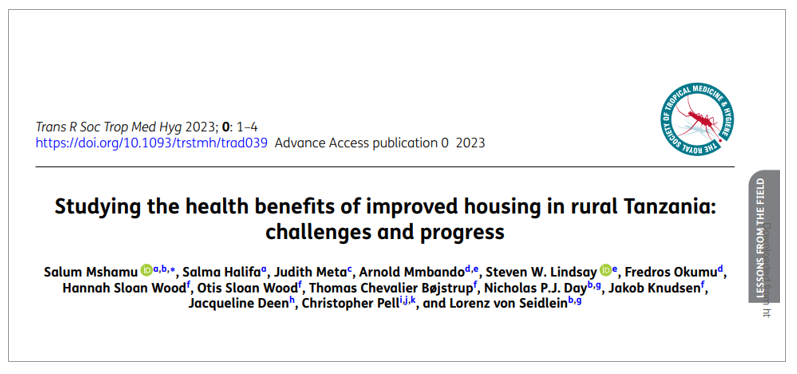
STAR HOMES: Better housing can reduce diseases, health risks

After researching the health advantages of improved housing in rural Tanzania, scientists assert that better housing can reduce diseases and related health concerns. The assertation was made after the scientists examined house designs called ‘Star homes’ in a pilot study conducted between 2014 and 2015.
Six Star homes were constructed in the study sites located in Magoda, in northeast Tanzania. The goal of the investigation was to determine whether housing design modifications are feasible and beneficial in rural Africa. The results of the study were published in June in the journal of the Royal Society for Tropical Medicine and Hygiene.
The Star homes, which were elevated off the ground and covered with timber, bamboo, or shade net, were said to be influenced by "Southeast Asian rural house design," according to the scientists. In comparison to traditional housing, all Star homes had better airflow and fewer mosquito concentrations.
More research is needed, though
Although the evidence indicated that Star homes showed positive benefits, the scientists were keen to urge even more research on the matter. They stated in the paper that "high-grade evidence from randomized controlled trials (RCTs) comparing the health of residents of novel-design houses with those living in traditional homes is needed to justify further investment and roll-out.”
Currently, there is a projection of an increased population from 1.3 billion today to 2.5 billion in 2050 in sub-Saharan Africa which could result in an increase in demand for new housing in the region. The tremendous rising demand for new housing according to scientists, presents an opportunity to address pervasive health issues.
“Millions of affordable healthy homes are needed for the rapidly expanding population of sub-Saharan Africa. This enormous challenge is an opportunity to address pervasive health issues linked to housing, where diseases that most impact children—malaria, diarrhoea and respiratory tract infections—are often acquired: mosquitoes largely transmit malaria indoors at night, unhygienic toilets and dirty surfaces predispose to enteric infections and polluted air from indoor cooking increases the risk of respiratory tract infections. Better housing can reduce these health risks.”
Challenges acknowledged
During the study the scientists acknowledged some challenges they faced when evaluating the health impact of the six house designs. In particular the obstacles included construction obstacles, reticence from the community to occupy the homes and disruption of social hierarchies within communities.
Addressing these challenges, the scientists called for the adaptation of community engagement in local context to build trust and avoid misunderstandings.
“These experiences highlight the critical need for pilot studies to understand the expectations, fears and hopes of participants in specific contexts. Community engagement must also be adapted to the local context, drawing on popular activities and narratives that resonate. Ultimately, the lesson was that establishing trust in a project is complex and time consuming.”
The study was conducted by a team of scientists from Tanzania, UK, Denmark, Philippines and The Netherlands. From Tanzania, contributors included Arnold Mmbando and Fredros Okumu from Ifakara Health Institute.
>>Read publication: https://pubmed.ncbi.nlm.nih.gov/37350735/
